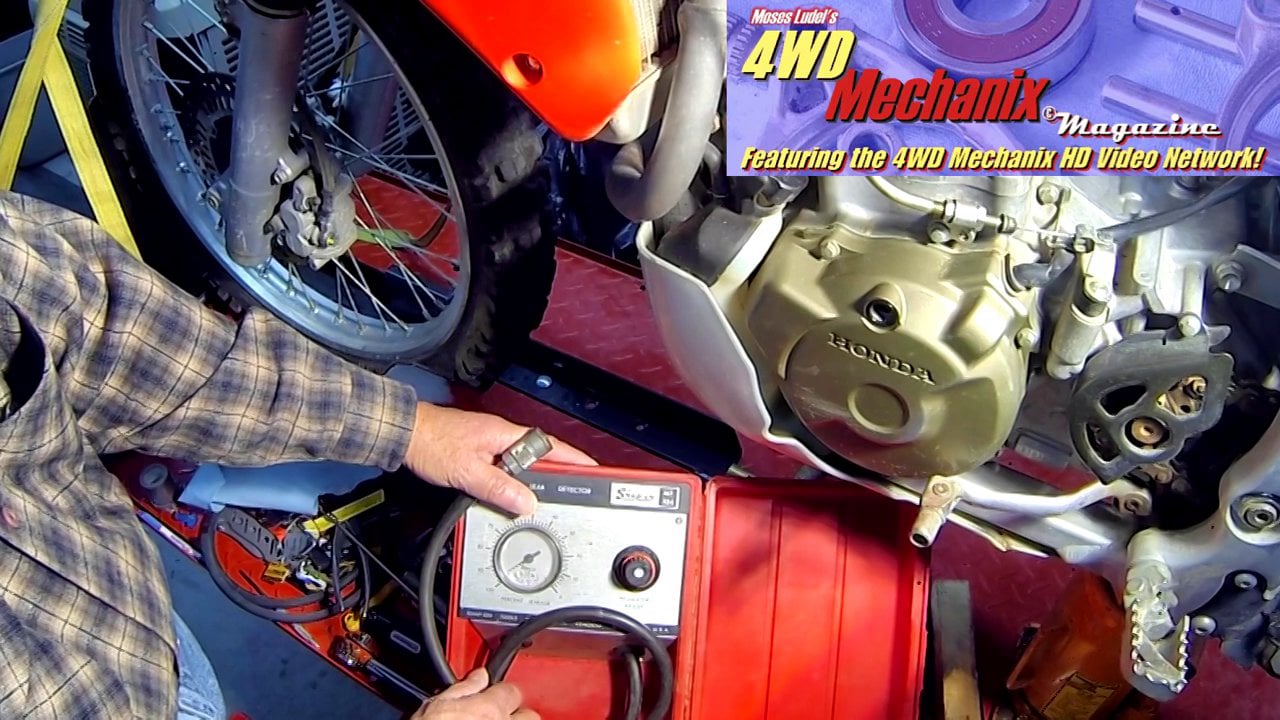In this engine diagnostics and troubleshooting how-to HD video, Moses Ludel discusses cylinder leak down testing. The magazine’s Honda XR650R motorcycle is the candidate. Learn how to perform a cylinder leak down test on any internal combustion engine and why this is a superior tool for pinpoint engine diagnostics.


The Honda XR650R cylinder leak down test begins with setting the piston at top-dead-center (TDC) of the compression stroke. TDC can be found with the timing mark or piston height reading, using a dial indicator and fixtures. A “two-stroke timing kit” with piston TDC finder will work here. This motorcycle engine is a four-stroke, single cylinder “thumper”.


This HD video describes how the leak down tester works. At left, Moses Ludel demonstrates how the gauge tester registers leakage. The gauge reads in percentage of leak. Percentage of leak is the amount of air leaking past the valves, piston rings, head gasket or a casting crack.


At left is an adapter made for the Snap-On MT324 leak down tester. Honda XR200R, XR350R and XR500R four-valve, single cylinder motorcycle engines have a small, difficult to reach spark plug. This Snap-On MT324 gauge has been a shop mainstay since the early 1980s. Maintained properly, this equipment will serve for a long time. At right, the actual leak down test with compressed air reveals considerable air loss at the upper cylinder of this XR650R Honda motorcycle engine.


At left, the air leak past the closed exhaust valves is considerable. At right, sealing the exhaust pipe tip causes air to rush out of the air intake box! This engine’s extreme 95% cylinder leakage is largely due to leaking intake and exhaust valves.


At left, any piston ring “blowby” can be read as air seeping into the crankcase. In this engine, the majority of leakage is intake and exhaust valve issues. There is also air leakage into the crankcase. At right, the air box shows abrasive debris at its edge. Dirt seeping into the air intake stream can cause intake and exhaust valve pitting or score the cylinder’s Nikasil liner. Nikasil wear at the top of the cylinder is evident when looking through the spark plug hole.
This engine required an upper cylinder tear down to confirm the extent and cause of damage. It is clear that the damage is severe enough to cause substantial compression loss. We will now rebuild the top end of this Honda XR650R motorcycle engine.

4WD Mechanix ‘Tech & Travel Forums topic—click here!

